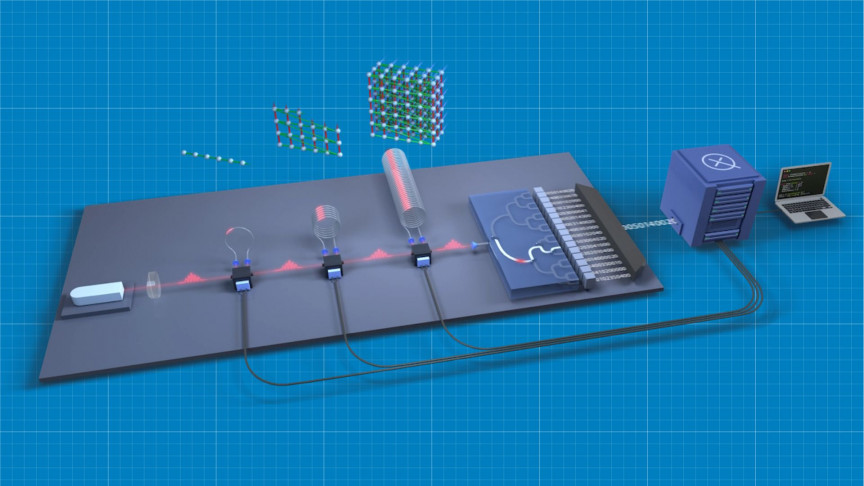A new Borealis quantum computer gets a computing edge
Quantum computing breakthroughs seem to happen all the time, but the technology still hasn’t been widely used.
Today, Canadian company Xanadu Quantum Technologies has achieved an impressive breakthrough with a new device capable of outperforming any supercomputer in the world in a particular task, according to an article by The Globe and Mail released Wednesday.
Achieving a “quantum advantage”
Xanadu has designed a quantum computer named Borealis that has achieved a “quantum advantage”, providing a rapid result that goes beyond the current capability of traditional computing systems. This result was the delivery of a series of numbers with a specified probability range in just 36 millionths of a second
By comparison, this task would take more than 9,000 years for the world’s most powerful supercomputers available today.
“That’s what we think is really great about it,” said Xanadu Founder and CEO Christian Weedbrook. The Globe and Mail. “A lot of these breakthroughs are what we need to come up with a quantum computer that’s useful to customers.”
The most important part of this breakthrough is that it indicates that the industry is on the path to universal quantum computing.
Other Key Quantum Computer Developments
Last January, researchers at the University of South Wales (UNSW) took a big step to prove that nearly error-free quantum computing is possible by delivering a device that performed 99% error-free operations. .
Meanwhile, November 2021 has seen two major breakthroughs in quantum computing. First, the American Quantum Economic Development Consortium revealed the results of benchmarking experiments that demonstrated how an advanced method of error suppression increased the likelihood of quantum computing algorithms succeeding on real hardware by an unprecedented 2,500%.
Second, engineers from Stanford University demonstrated a simpler yet more advanced new design for a quantum computer that could help practical versions of the machine finally become a reality. The new design saw a single atom become entangled with a series of photons, allowing it to process and store more information, as well as operate at room temperature.
What does all this mean?
Quantum computing could soon arrive in our homes and offices.
Barry Sanders, director of the Institute for Quantum Science and Technology at the University of Calgary, which was not affiliated with Xanadu, said The Globe and Mail that this latest development is significant.
“It’s not a small step, it’s a big step forward,” Sanders said.
Xanadu uses an approach known as photonics which has the key advantage of designing a device that can operate at room temperature. But it’s not ready to go yet. Engineers calculate that it will take at least a million qubits to produce a commercially relevant quantum computer. Still, the development is a step forward that simply cannot be ignored.
The study was published in the Nature log.
Summary:
A quantum computer achieves a computational advantage when it outperforms the best classical computers running the best-known algorithms on well-defined tasks. No photonic machine offering programmability on all of its quantum gates has demonstrated a quantum advantage in computation: previous machines1.2 were largely limited to static gate sequences. Previous photonic demonstrations were also vulnerable to spoofing3, in which the classical heuristic produces samples, without direct simulation, closer to the ideal distribution than the samples of the quantum hardware. Here we report the advantage of quantum computing using Borealis, a photonic processor offering dynamic programmability on all implemented gates. We perform Gaussian boson sampling4 (GBS) over 216 entangled compressed modes with three-dimensional connectivity5, using a time multiplexed architecture and solving the number of photons. On average, it would take more than 9,000 years for the best algorithms and supercomputers available to produce, using exact methods, a single sample of the programmed distribution, whereas Borealis requires only 36 μs. This runtime advantage is more than 50 million times more extreme than that reported by earlier photonic machines. Ours constitutes a very large GBS experiment, recording events with up to 219 photons and an average photon count of 125. This work is a critical step on the way to a practical quantum computer, validating key technological features of the photonics as a platform for this goal. .


Comments are closed.